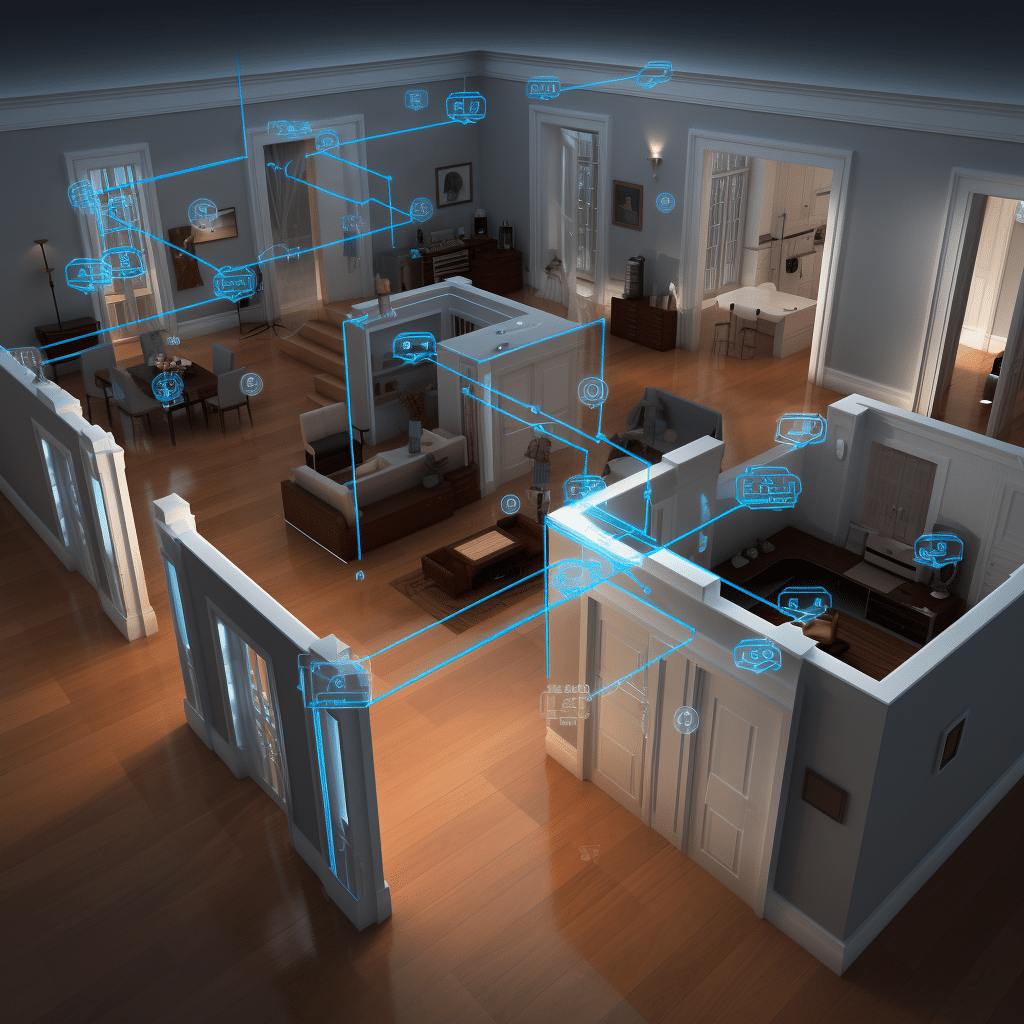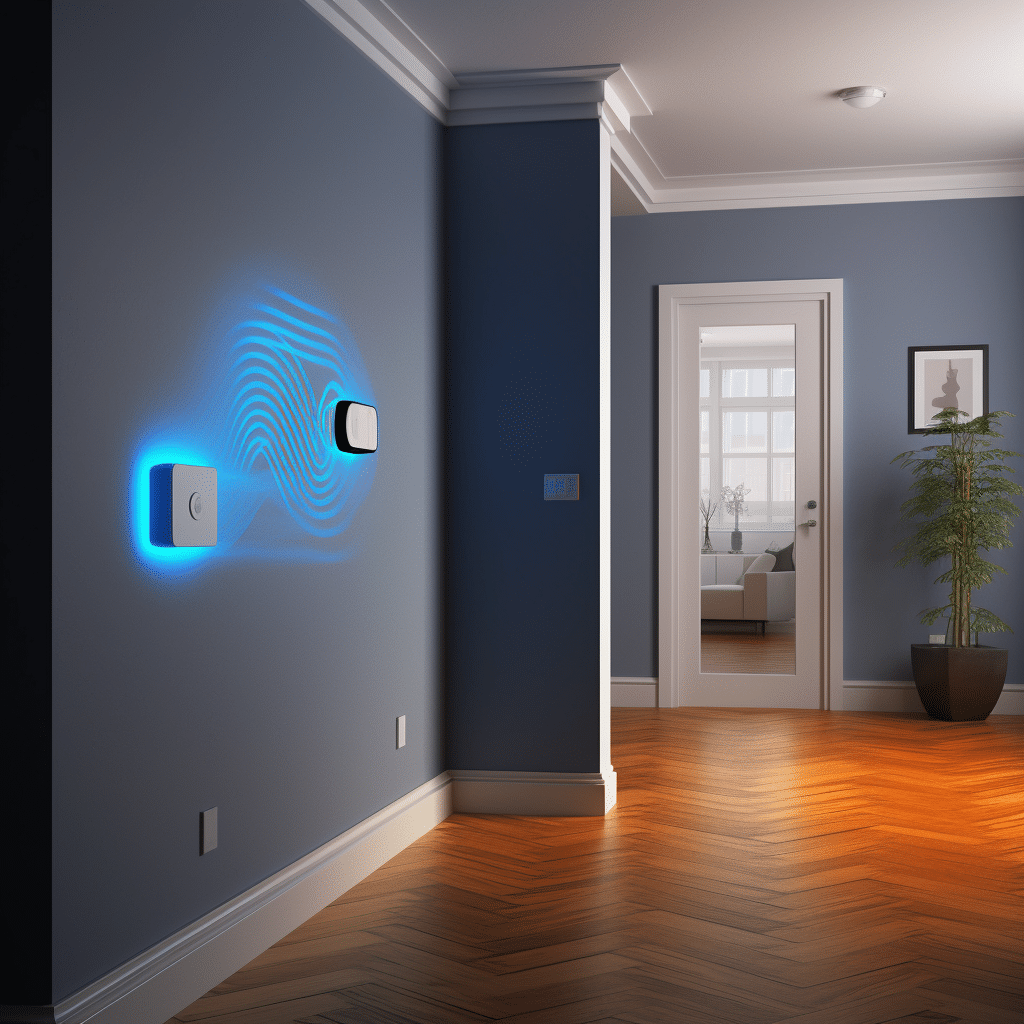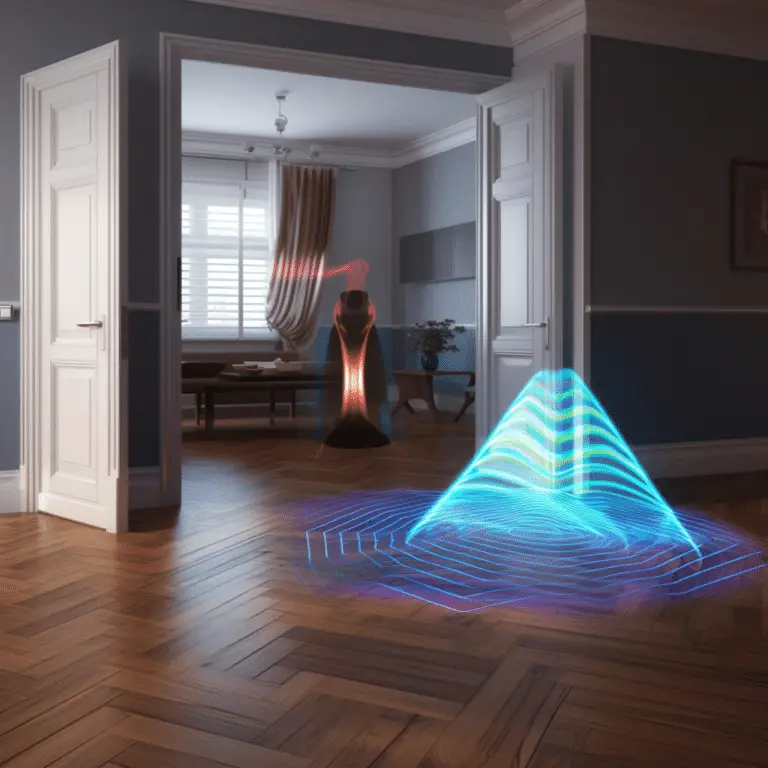Introduction
Understanding Motion Sensors: Types, Functions, and Applications Motion sensors and cameras are two different technologies that serve different purposes. While motion sensors are designed to detect movement and trigger an action, cameras are used to capture images or record videos. However, there are certain types of motion sensors that incorporate camera technology to provide a more comprehensive security solution.
Traditional motion sensors are typically used in security systems to detect movement within a specific area. These sensors work by emitting infrared or microwave signals and measuring the reflection or disturbance caused by an object in motion. When the sensor detects a change in the signal, it sends a signal to the control panel, which can then activate an alarm or perform a specific action.
On the other hand, cameras are devices that use lenses and motion sensors to capture visual information. They can be used for various purposes, such as surveillance, photography, or video recording. Cameras can be connected to a monitoring system or network, allowing users to view the captured images or videos in real-time or at a later time.
However, there are now motion sensor cameras available in the market that combine the functionalities of both motion sensors and cameras. These devices incorporate motion detection technology with built-in cameras, allowing them to capture images or record videos when motion is detected. This integration provides a more comprehensive security solution as it not only detects movement but also provides visual evidence of the event.
Do motion light sensors have cameras?
No, motion light sensors do not have cameras. Motion light sensors are devices that are designed to detect motion and trigger a light to turn on. They are commonly used for security purposes, as they can help deter potential intruders by illuminating an area when motion is detected. However, motion light sensors do not have the capability to capture or record images or videos.
Motion light sensors work by using various technologies to detect motion. Some common types of motion sensors include passive infrared (PIR) sensors, microwave sensors, and ultrasonic sensors. These sensors are able to detect changes in heat, movement, or sound waves, respectively, and use this information to determine if there is motion in the area.
Once motion is detected, the motion light sensor sends a signal to the connected light fixture, which then turns on. This can be useful for providing illumination in areas such as driveways, walkways, or outdoor spaces where additional lighting may be needed for safety or convenience.
While motion light sensors are effective at detecting motion and triggering lights, they do not have the ability to capture or transmit images or videos. If you are looking for a device that can monitor and record video footage, you would need to consider a separate security camera system.
Security cameras are designed specifically for capturing and recording images or videos. They can be connected to a network or a recording device, allowing you to monitor and review footage as needed. Some security cameras also have motion detection capabilities, which can trigger recording when motion is detected.

Is a motion sensor a CCTV?
No, a motion sensor is not a CCTV. While both devices are used for security purposes, they serve different functions and have distinct features.
A motion sensor is a device that detects movement or motion in its surroundings. It is typically used to trigger an alarm or activate other security measures when it senses any movement. Motion sensors are commonly found in home security systems, outdoor lighting systems, and automatic doors. They work by detecting changes in infrared radiation, sound waves, or other physical phenomena.
On the other hand, a CCTV (Closed-Circuit Television) system is a surveillance system that uses video cameras to transmit signals to a specific set of monitors or recording devices. CCTV systems are used to monitor and record activities in specific areas, such as homes, businesses, or public spaces. They provide a visual record of events and can be used for real-time monitoring or later review.
Unlike motion sensors, CCTV systems provide continuous video surveillance and recording capabilities. They can capture and store footage for extended periods, allowing for detailed analysis and evidence gathering. CCTV systems often include features such as pan-tilt-zoom (PTZ) cameras, night vision capabilities, and remote access for monitoring from anywhere.
While both motion sensors and CCTV systems contribute to security, they serve different purposes. Motion sensors are designed to detect movement and trigger an alarm, while CCTV systems provide visual surveillance and recording capabilities. Depending on the security needs, a combination of both devices may be used to enhance overall security measures.
Do motion detector cameras record?
Yes, motion detector cameras do record. Motion detector cameras are designed to detect any movement within their field of view and automatically start recording when motion is detected. These cameras are equipped with sensors that can detect changes in the environment, such as movement or heat signatures, and trigger the recording function.
When something moves, the camera starts recording and saves it on a hard drive or memory card. People use these cameras to watch over their homes and businesses. They’re good because they don’t record all the time, only when they sense motion. This saves space and battery. The cameras can also send alerts to your phone when they sense motion. These cameras are useful for security.
Motion detector cameras only record when there is movement, saving storage and battery. They can also send alerts. They give peace of mind for home or commercial security.
What type of device is a motion sensor?
A motion sensor is a type of device that is designed to detect movement or motion in its surrounding environment. It is commonly used in various applications such as security systems, automatic lighting systems, and even in video games. The main purpose of a motion sensor is to detect any changes in the environment and trigger a response or action based on those changes.
There are different types of motion sensors available in the market, each with its own unique features and capabilities. One common type of motion sensor is the passive infrared (PIR) sensor. This type of sensor detects changes in infrared radiation, which is emitted by all objects that have a temperature above absolute zero. When a person or object moves within the range of the PIR sensor, it detects the change in infrared radiation and triggers a response.
Another type of motion sensor is the ultrasonic sensor. This sensor emits high-frequency sound waves and measures the time it takes for the sound waves to bounce back after hitting an object. If there is a change in the time it takes for the sound waves to bounce back, it indicates that there is movement in the environment.
Some motion sensors also use microwave technology to detect motion. These sensors emit microwave signals and measure the frequency of the reflected signals. When there is a change in the frequency of the reflected signals, it indicates that there is movement in the environment.
In addition to these types of motion sensors, there are also more advanced sensors that use a combination of different technologies to detect motion. These sensors are often used in high-security applications where accuracy and reliability are crucial.
What is the difference between a camera and a motion sensor?
A camera and a motion sensor are both devices used for surveillance and security purposes, but they have distinct differences in terms of their functionality and capabilities.
A camera takes pictures and videos using light and electronics. It has many uses, like taking photos or recording videos. There are different types of cameras, like digital ones or CCTV cameras.
A motion sensor detects movement using technology like infrared or microwave. When it senses movement, it can make something happen, like turning on lights or an alarm. Motion sensors are often used in security systems or smart homes.
The main difference between a camera and a motion sensor is what they do. A camera takes pictures or videos, while a motion sensor detects movement and triggers actions. Cameras are for visual evidence, while motion sensors are for making things happen.
Another difference is the way they operate. Cameras require a continuous power source and storage capacity to capture and store images or videos. They can be set to record continuously or triggered by specific events. On the other hand, motion sensors are typically battery-powered and operate by detecting changes in their surroundings. They are designed to conserve power and only activate when motion is detected.
Are motion sensors cameras?
No, motion sensors are not cameras. While both motion sensors and cameras are used for security purposes, they serve different functions. A motion sensor is a device that detects movement or motion in its surroundings. It works by emitting signals and measuring the time it takes for the signals to bounce back after hitting an object. This allows the motion sensor to determine if there is any movement in its range. On the other hand, a camera is a device that captures and records visual images or videos. It uses lenses and sensors to capture light and convert it into digital signals, creating a visual representation of the scene.
Although some security systems may incorporate both motion sensors and cameras, they are separate components with distinct functionalities. Motion sensors are typically used to trigger an alarm or activate other security measures when movement is detected. Cameras, on the other hand, are used to capture visual evidence of events or monitor an area in real-time. While motion sensors can be an important part of a security system, they do not have the ability to capture images or record videos like cameras do.
Are motion sensors cameras?
No, motion sensors are not cameras. While both motion sensors and cameras are used for security purposes, they serve different functions. A motion sensor is a device that detects movement in its surroundings and triggers an action, such as turning on lights or sounding an alarm. It does not capture or record any visual information. On the other hand, a camera is a device that captures and records visual information, allowing for surveillance and monitoring.
Motion sensors work by detecting changes in infrared radiation or sound waves, depending on the type of sensor. When movement is detected, the sensor sends a signal to the connected system to initiate the desired action. This makes motion sensors an effective and efficient way to detect and respond to movement in a given area without the need for visual information.
While cameras can also be used for motion detection, they are not the same as motion sensors. Cameras capture visual information, which can be useful for identifying individuals or recording events. However, cameras require more resources and storage capacity compared to motion sensors. Therefore, the choice between using motion sensors or cameras depends on the specific security needs and requirements of the situation.
Are motion sensors cameras?
No, motion sensors are not cameras. While both motion sensors and cameras are used for security purposes, they serve different functions. A motion sensor is a device that detects movement in its surroundings and triggers an action, such as turning on lights or sounding an alarm. On the other hand, a camera captures visual images or videos of its surroundings.
Motion sensors work by detecting changes in infrared radiation or sound waves, depending on the type of sensor. When a person or object moves within the sensor’s range, it detects the change and sends a signal to the connected system to initiate the programmed action. This can be useful for detecting intruders or triggering automated responses in smart home systems.
While some security cameras may have built-in motion sensors, not all motion sensors have cameras. Motion sensors are often used in conjunction with cameras to enhance security systems. For example, a camera may be set to record video footage only when the motion sensor detects movement, conserving storage space and reducing false alarms. However, it is important to note that motion sensors can function independently without cameras.
Are motion sensors cameras?
No, motion sensors are not cameras. While both motion sensors and cameras are used for security purposes, they serve different functions. A motion sensor is a device that detects movement or motion in its surroundings. It works by emitting signals, such as infrared or microwave, and then measuring the reflection of those signals. When the sensor detects a change in the reflected signals, it triggers an action, such as turning on lights or sounding an alarm.
On the other hand, cameras are devices that capture and record visual images or videos. They use lenses and sensors to capture light and convert it into an electronic signal, which is then processed and stored as an image or video file. Cameras are commonly used for surveillance and monitoring, as they provide visual evidence of events or activities.
Therefore, while motion sensors and cameras may be used together in a security system, they are distinct devices with different functionalities. Motion sensors detect movement, while cameras capture visual images or videos.
Are motion sensors cameras?
No, motion sensor are not cameras. While both motion sensor and cameras are used for security purposes, they serve different functions. A motion sensor is a device that detects movement or motion in its surroundings. It works by sensing changes in infrared radiation or sound waves, depending on the type of sensor. When motion is detected, it triggers an alarm or activates a specific action, such as turning on lights or sounding a siren.
On the other hand, cameras are devices that capture and record visual images or videos. They are used for surveillance and monitoring purposes, allowing users to see and review what is happening in a specific area. Cameras can be connected to motion sensor to enhance security systems, but motion sensor themselves do not have the capability to capture images or videos.

Conclusion
Motion sensor detect changes and activate a response in security systems, lighting, and gaming. They detect movement or heat and can trigger alarms or notifications. Cameras capture visual information and come in different types, like CCTV or smartphone cameras. They record events, stream live footage, and monitor activities in public spaces, commercial areas, and homes. They use lenses and sensors to store or transmit images and videos to a monitoring system.
While motion sensors lights and cameras are different technologies, they can be integrated to create more advanced security systems. By combining the capabilities of both technologies, it is possible to have a more comprehensive surveillance system. For example, motion sensor can be used to trigger the activation of cameras when movement is detected. This ensures that the cameras are only recording when there is activity, saving storage space and making it easier to review footage. Additionally, the combination of motion sensor and cameras can provide real-time alerts and notifications, allowing for immediate action to be taken in case of any suspicious activity.
Motion sensor and cameras are important for security. Motion sensor detect movement and cameras capture images. Combining these technologies can make better surveillance systems. Using them separately or together can ensure safety and protect against threats. Find out if motion sensor have cameras and how they improve security. Learn about the advantages and uses of motion sensor cameras for your home or business.

